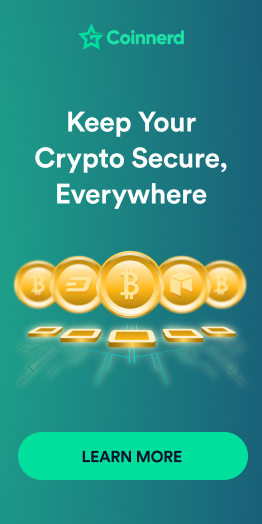What Is The BRC-20 Token Standard For Bitcoin?
Discover the Innovation Behind BRC-20, the Latest Token Standard on Bitcoin. Join Coinnerd for Insightful Details!
What Is BRC-20?
BRC-20, an experimental token via the Ordinals protocol, embeds data as text onto the Bitcoin network. Initially limited, developer engagement expanded its applications, though it remains non-interoperable with smart contracts.
Characteristics of the BRC-20 token:
- Exchange of utility
Like other tokens, BRC-20 tokens enable seamless user transactions and are tradable on specific exchanges like Gate.io, OKX, Huobi, Kucoin, and more.
- Utilization within DeFi applications
Since its inception, developers have consistently introduced fresh applications, broadening the capabilities of BRC-20 tokens. These include specialized token-standard DEXs like BitX for swapping and OKX Wallet for staking and earning rewards.
Example Of BRC-20
A visual representation of a BRC-20 is depicted in the image below:

With :
- Primary (p): Tokens conforming to the BRC-20 standard are currently being issued.
- Operational (op): This transaction involves the deployment or initialization of the “Ordi” token.
- Ticker (tick): The token is identified by the ticker symbol “Ordi.”
- Maximum (max): The maximum supply of Ordi tokens stands at 21,000,000 tokens.
- Limitation (lim): The maximum quantity of Ordi tokens that can potentially be minted in a single transaction is restricted to 1,000.
Evolution Of The BRC-20 Standard
November 2021 witnessed the deployment of the Taproot update on the Bitcoin network, expanding data capacity in Bitcoin blocks and paving the way for fresh avenues of network development.
January 2023 marked the launch of the Ordinals protocol by Casey Rodarmor. This innovative protocol empowered developers to introduce NFTs to Bitcoin. In its initial weeks, the focus lay on leveraging the protocol to create NFTs within the Bitcoin network. Esteemed projects like Yuga Labs and DeGods launched their NFT collections on Bitcoin Ordinals.
Bitcoin has drawn a fresh audience: NFT collectors. The surge in active Bitcoin wallets has notably bolstered transaction support within the mempool.
March 2023 saw the introduction of the BRC-20 token standard by developer Domo (@domodata), built upon the foundation of Ordinals.
The initial BRC-20 token, named “ordi,” paved the way for swift development of supporting tools like Ordinals Wallet and Unisat Wallet. Subsequently, a wave of successor tokens emerged, with some experiencing significant price surges.
BRC-20 Token Market Analysis

Currently, there exist 41,000 BRC-20 tokens, amounting to a collective capitalization nearing 1 billion USD. Notably, “BRC-20 NAME SERVICE” and “ordi” hold capitalizations of 124 million and 79 million USD, constituting over 20% of the total BRC-20 token market capitalization.

The Ordinals protocol facilitates the integration of diverse data types—text, images, audio, and video—into the Bitcoin network, with BRC-20 tokens being assets formulated in textual form. The chart depicts the robust expansion of BRC-20 tokens. Initially, during its March launch, daily BRC-20 Inscriptions minted were approximately 20,000. Presently, this figure has surged nearly tenfold to 198,000 BRC-20 tokens minted daily.

Since its March inception, over 27 million BRC-20 Inscriptions have been minted, incurring a cumulative transaction fee of approximately 1454 BTC for users.
Despite notable growth in the BRC-20 token market over the last 7 months, it still significantly trails behind ERC-20. The collective capitalization of ERC-20 tokens has now surged to hundreds of billions of USD.
Contrast Between BRC-20 & ERC-20
In contrast to ERC-20, BRC-20, built via the Ordinals protocol, lacks smart contract interoperability, imposing several constraints on its functionality. Presently, users can only utilize BRC-20 for basic actions like token transfers and swaps on limited platforms. Conversely, ERC-20, with its smart contract capabilities, offers a plethora of functionalities.
Operating on the Bitcoin blockchain with a Proof-of-Work consensus mechanism, BRC-20 incurs notably higher gas fees for token operations compared to ERC-20.
Strengths & Weaknesses Of BRC-20 Token
Strengths
- The security level of the Bitcoin network is extremely robust, significantly reducing the likelihood of a successful hack.
Weaknesses
- As this token standard remains in its testing phase, numerous potential risks persist.
- The utilization of a Proof-of-Work consensus mechanism in the Bitcoin network results in relatively elevated gas fees for users.
- In contrast to token standards on other blockchains, BRC-20 exhibits notably limited features.
Where Are Suitable Storage Options For BRC-20?
Contrary to its initial launch, numerous projects have since developed wallet applications tailored for storing BRC-20 tokens.
Ordinals Wallet
On February 16, 2023, the Ordinals Wallet emerged as a Bitcoin-centric wallet. Enabling users to securely store Bitcoin alongside BRC-20 tokens is the primary function of this wallet application.

Unisat
Apart from Ordinals, Unisat stands as one of the pioneering wallet applications designed for BRC-20 tokens. UniSat Wallet, an extension on the Chrome browser, boasts open-source code and facilitates the storage of Ordinals NFTs and BRC-20 tokens.

Xverse
Xverse represents a non-custodial crypto wallet enabling users to oversee and trade Bitcoin alongside Bitcoin NFTs. Operating on Stacks, a Bitcoin layer supporting web3 applications, Xverse is poised to offer instantaneous, cost-effective multisig BTC trading and compatibility with Ledger hardware wallets in upcoming iterations.

OKX Wallet
OKX Wallet pioneers as the initial multi-chain wallet facilitating BRC-20 token transactions and Bitcoin NFT trading through the introduction of Ordinals Market.

Guidelines For BRC-20 Token Trading
You’ll find Coinnerd guide to trading BRC-20 tokens right here.
Platforms That Accommodate BRC-20 Tokens
Several exchanges have facilitated BRC-20 token trading, including OKX, Bybit, MEXC, Gate.io, Kucoin, and more.
Summary
The emergence of the Ordinals protocol and Bitcoin NFT has infused the crypto market with innovation. BRC-20, as the next step in Bitcoin NFT evolution, faces constraints due to limitations within the Bitcoin network, constraining its current applications.
As a newcomer, the BRC-20 token is not yet poised to rival established advisors in the crypto market like ERC-20. Its journey to attaining a similar level of popularity will likely take time.
Coin68 aims to offer readers an overview of the BRC-20 token and its present limitations through this article.
Note: Given that BRC-20 is still in its testing phase, thoughtful consideration is advised before choosing to mint or invest in this token.
READ MORE NEWS ON
Bitcoin | Inflation Deflation Deflation Inflation Cryptocurrencies
* We hope this information will help you in your investment process, but this is not investment advice. Every investment carries risk, especially in this industry, so DYOR before making a decision.






